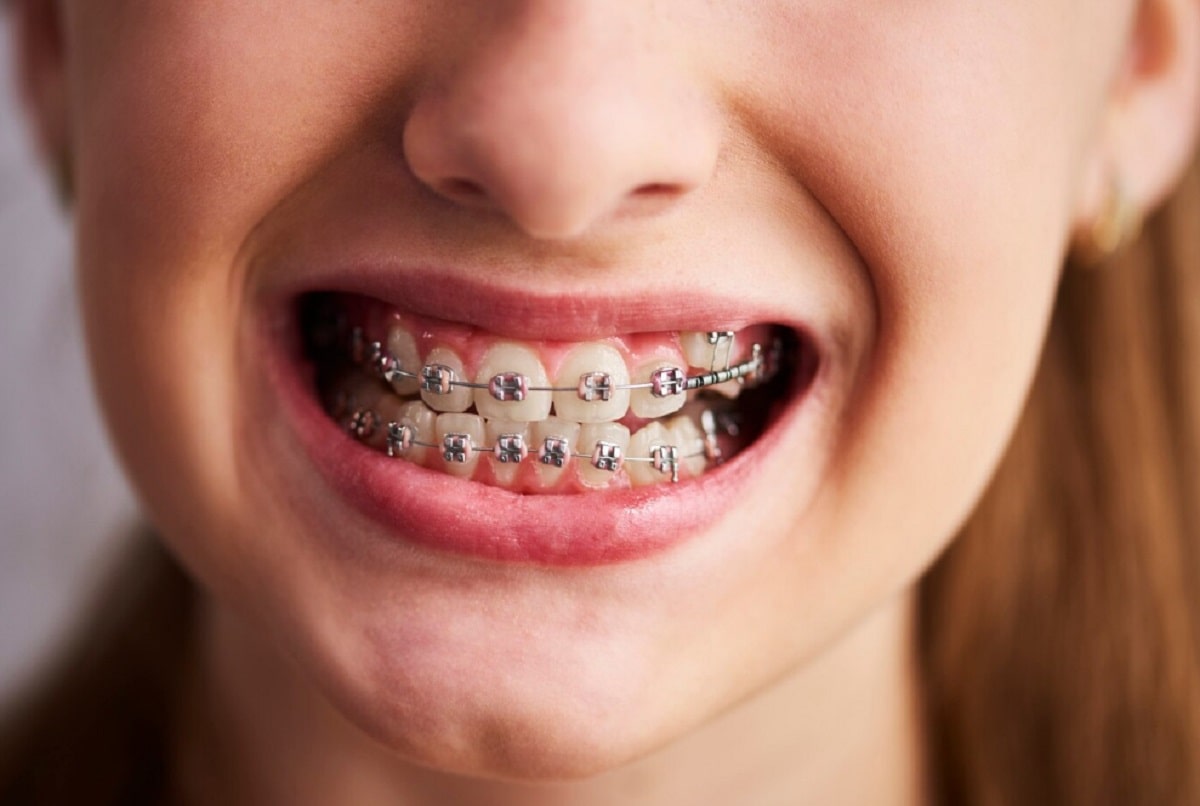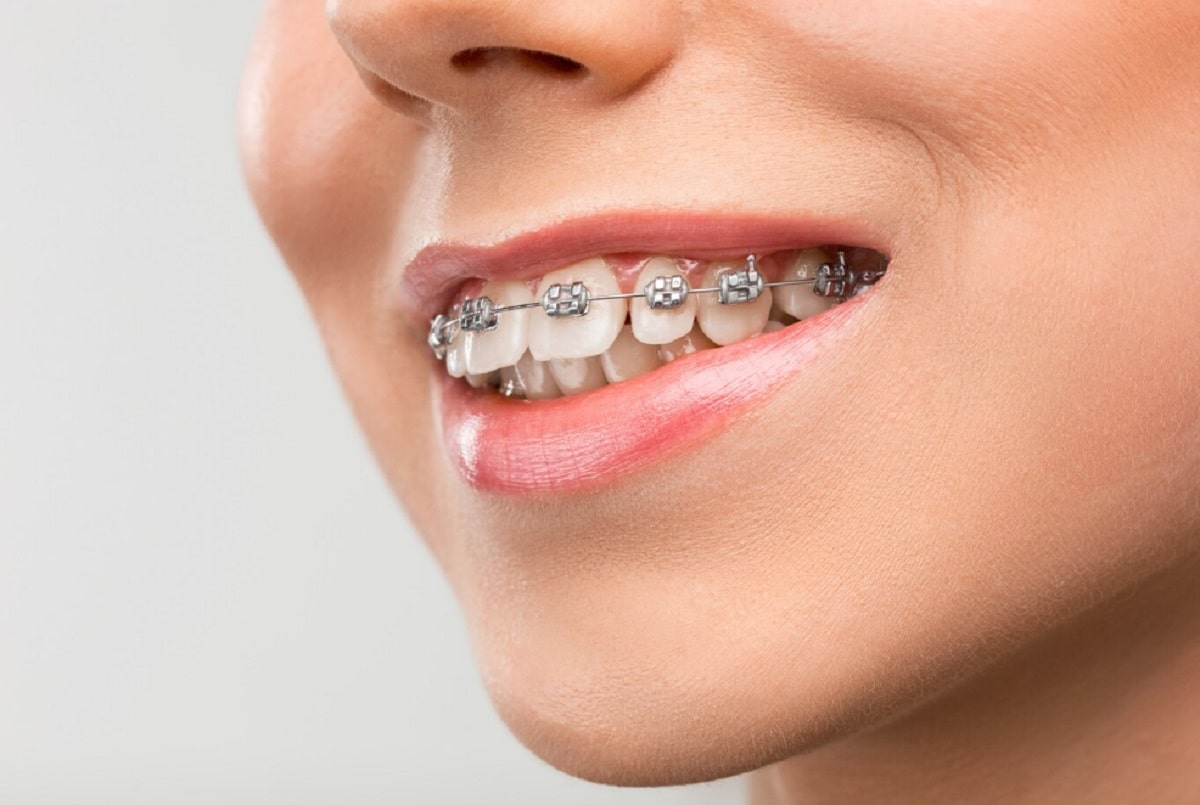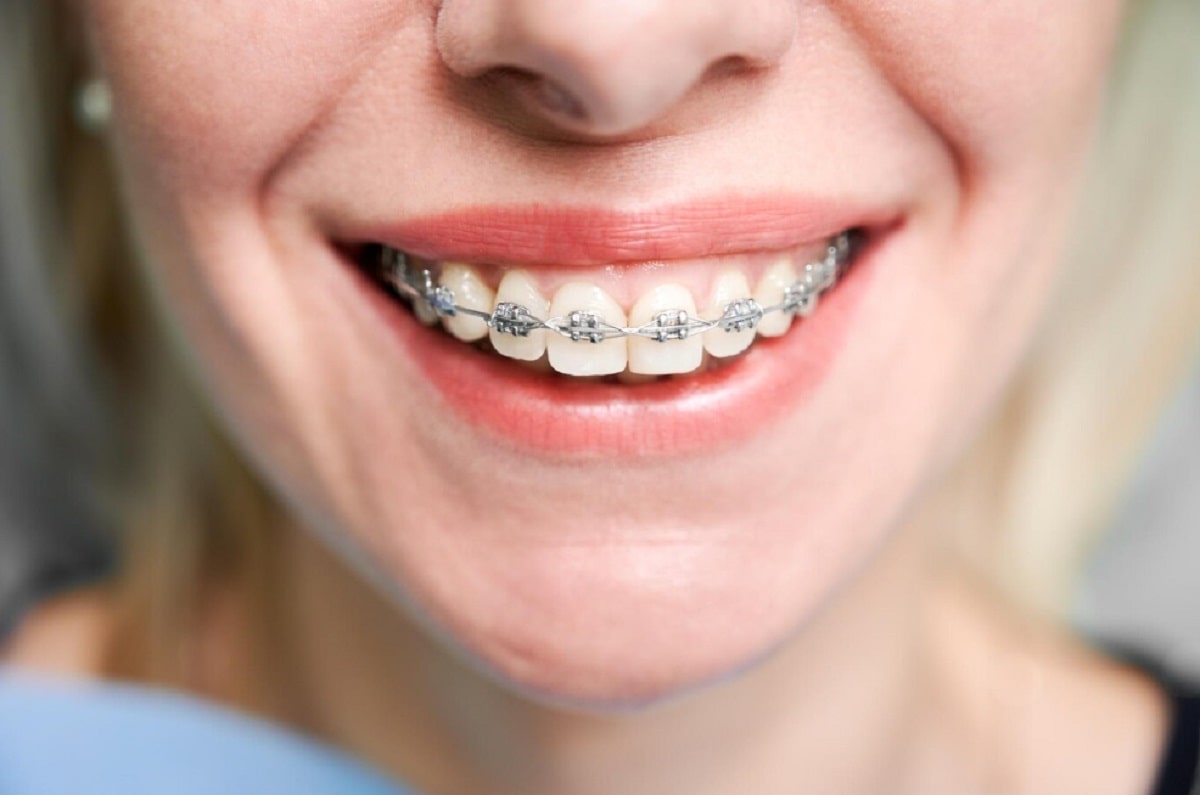Young orthodontics procedures are continuously performed by specialist Dr. Yasin Akgül. The goal is to achieve an aesthetic dental appearance for individuals in adolescence/youth. Since this appearance significantly improves self-confidence, orthodontic treatment in young people has become widespread. The majority of patients seek treatment at this age.
Orthodontic treatment during adolescence does not differ from that of adults. On the contrary, orthodontic treatment is widely accepted internationally. The procedures and orthodontic methods are the same. However, young orthodontics differs with the frequently asked questions and concerns posed to specialists.
What is Orthodontics?
In short, orthodontics is the comprehensive set of treatments aimed at correcting misalignment or crookedness in the teeth, mouth, or jaw structure. Today, these treatments are performed by specialists. It does not involve a single method. On the contrary, multiple options are available for young orthodontic procedures. Patients can choose the method that suits them best and proceed with the treatment.
The condition of crooked teeth, which can have both aesthetic and psychological effects, creates negative impressions. Since adolescence is a period where appearance matters, attention is paid to how one looks. Thus, orthodontic treatments for young people are applied to those who are dissatisfied with their teeth. These dental treatments are performed under specialist supervision for both health reasons and to address purely aesthetic concerns.

Who Performs Young Orthodontics Procedures Today?
Compared to other dental treatments, young orthodontic treatment cannot be performed by just any dentist. It requires a dentist who has specialized in the field. To perform orthodontic treatment on adolescents, the specialist must have the title of ‘Orthodontist.’ This requires the individual to first graduate from a Faculty of Dentistry and then complete 4 years of specialized training.
Dr. Yasin Akgül has gone through these stages and earned the title of ‘Orthodontist.’ He can perform all orthodontic procedures in his clinic for his existing patients. To ensure that patients achieve a healthy, trouble-free, and desired appearance, it is essential to consult specialists like him. If you are interested in orthodontic treatment, feel free to contact him.
Why Should Adolescents Receive Orthodontic Treatment?
Adolescence is a period that begins around the ages of 12-13 and ends around 18-20. This time frame is when the human face undergoes the most change and development. If treatment is needed for this change to progress positively in the facial structure, it should be received. Therefore, it is important to treat orthodontic issues that arise in adolescence due to factors such as wisdom teeth or issues carried over from childhood.
Orthodontic problems that were not treated during childhood become more pronounced during adolescence as the face changes. Orthodontic intervention during this period is effective and quickly resolves the issue.
When Should Young Orthodontics Procedures Be Performed?
In general, there is no need to wait for a problem to arise to consider young orthodontics. It is possible to seek treatment as a preventive measure. However, in most cases, treatment is necessary when the patient has:
- Jaw misalignment or displacement,
- Crooked teeth,
- Misaligned tooth appearance,
- Overlapping teeth structure,
- An anomaly in the mouth structure,
- Diastema (Gaps between teeth).
Adolescents generally seek orthodontic treatment when aesthetic concerns arise. However, as previously mentioned, treatment can also be received as a preventive measure even without any serious problems.
How Long Does Orthodontic Treatment Take in Adolescents?
Receiving orthodontic treatment at a young age has a positive effect on the duration of the treatment. Since the teeth move and the bones fuse more quickly in younger patients, the results of adult orthodontics can be achieved much earlier. Young orthodontics treatments usually conclude within 6 months to 1 year.
What Are the Orthodontic Treatment Methods in Adolescence?
Today, many procedures can be performed as part of orthodontic treatments. The variety of options available makes it possible to carry out child orthodontic procedures as well. Individuals of all ages can choose the method that suits their preferences and budget. The methods performed by Dr. Yasin Akgül are as follows:
1 – Metal Braces
Metal braces are the most well-known and commonly used method. They are also a preferred option for young orthodontics treatments. However, due to aesthetic concerns and their visibility, they are not easily preferred by patients. The primary reason for their popularity is their affordability.
2 – Lingual Orthodontics
Lingual orthodontics is applied to avoid visible braces from the outside, making it a suitable option for adolescent orthodontics. The braces and brackets are placed on the back of the teeth rather than the front. This advantage makes it a preferred method within young orthodontics, as the treatment is invisible from the outside.
3 – Invisalign Clear Aligners
Among the most common methods for young orthodontics are Invisalign clear aligners. The aesthetic benefits of clear aligners are numerous. Given that aesthetics are a concern in young orthodontics, aligners are a preferred choice. The treatment is done without using any brackets or wires.
Does Orthodontic Treatment in Adolescents Provide Permanent Results?
When performed by a specialist, young orthodontic treatments aim for permanence. Unlike other methods, orthodontic treatments are designed to last longer and prevent the need for repeated treatments. Dr. Yasin Akgül provides patients with information on how to maintain the results and prevent relapses.
The same applies to young orthodontics. If the rules are followed during the treatment, there will be no shifting of the teeth once the treatment is completed. The permanent results ensure long-term comfort in using your teeth. However, it is important to remember to adhere to the guidelines of young orthodontic treatment to maintain these results.
Lingual Retainers and Retention Plates
After orthodontic treatment, various retention methods are used to maintain the new positions of the teeth. Lingual retainers and retention plates (retainer plates) are the most common among them.
Lingual Retainer:
A lingual retainer is a fixed device made of thin wires that are bonded to the back surfaces of the teeth. It is usually applied to the lower front teeth and prevents the teeth from shifting back to their original positions. Since the lingual retainer is invisible, it minimizes aesthetic concerns and remains in place at all times, making it highly effective in maintaining the new positions of the teeth.
Retention Plates:
Retention plates are removable appliances that patients can take on and off. These plates stabilize the teeth after treatment and are usually made from clear materials. It is recommended that young patients wear these plates for a certain number of hours each day, with nighttime use being the most common. Retention plates help maintain the position of the teeth, ensuring long-term stability.
What Should Be Considered During Orthodontic Treatment in Adolescence?
Both specialists and patients have specific responsibilities to ensure the desired outcomes of treatments. Since orthodontic treatments, especially long-term ones, require careful attention, several factors should be considered during young orthodontic treatment:
|
Using Plates During Meals |
Invisalign clear aligners should not be used while eating or drinking. The only exception is drinking water. During the consumption of all other foods and beverages, the aligners should be removed, and after cleaning the teeth, the aligners should be replaced. |
|
Cleaning and Hygiene of Aligners |
Dr. Yasin Akgül places great importance on hygiene during young orthodontic treatment. The aligners should be cleaned regularly and stored in a hygienic environment. |
| Duration of Aligner Use in Young Orthodontic Treatment | One of the key aspects of orthodontic treatment is the duration of aligner use. For young orthodontic treatments, the aligners should be worn for at least 20 hours a day. Keeping them on during sleep will also make the treatment more effective. |
| Consistency in Attending Appointments with the Orthodontist | Appointments are scheduled by the orthodontist for check-ups and necessary information. Even though aligners are provided to patients as part of young orthodontic treatment, it is essential to attend appointments without delay. |
| Switching to the Correct Aligner at the Right Time | Patients are advised by specialists when it is the right time to switch between aligners, depending on the progress of their young orthodontic journey. Switching at the appropriate time will not only make the transition easier for the patient but also ensure the desired movement of the teeth. |
Does Orthodontic Treatment Prevent Adolescents from Playing Sports?
Sports are common among young people. Due to the high level of physical activity, there is often concern about whether young orthodontic treatment will interfere with playing sports. However, the use of Invisalign clear aligners will not hinder sports activities. Adolescents can comfortably continue their treatment. If metal braces are being used, however, it is important to avoid impacts, or protective gear should be worn.
- What are the disadvantages if orthodontic treatment is not received during adolescence?
If orthodontic intervention has not been received by the time of adolescence, orthodontic treatment can still be done in later years. However, since the period in which orthodontic intervention yields quick and effective results has passed, the treatment process may take longer, and as the bones have settled in later years, the available treatment options may also decrease. Bone irregularities can be resolved with orthodontic interventions before facial growth is complete. However, if facial development has been completed, potential problems may require surgical intervention. Therefore, if there is a skeletal disorder, the procedure should be performed during adolescence to avoid surgery. Orthodontic approaches should focus on resolving the problem quickly and effectively.
If orthodontic intervention has not been received by the time of adolescence, orthodontic treatment can still be received in later years. However, since the period in which orthodontic intervention yields quick and effective results has passed, the treatment process may take longer, and as the bones are more set in later years, the available treatment options may also decrease. Bone irregularities can be resolved with orthodontic interventions before facial growth is complete. However, if the face has fully developed, potential problems may require surgical intervention. Therefore, if there is a skeletal disorder, treatment should be carried out during adolescence to avoid surgery. Orthodontic approaches should focus on resolving the problem quickly and effectively.
- What Causes Orthodontic Treatment During Adolescence?
In fact, children should ideally undergo an orthodontic examination at the age of 7. Orthodontic problems that are not treated at an early age tend to develop into bigger issues later in life.
For example, improperly positioned upper incisors may prematurely contact the lower jaw, inhibiting its growth. Issues that could have been easily treated earlier may lead to bigger problems if left untreated. Wisdom teeth, located at the very back of the upper and lower jawlines, are the third and final molars. They typically emerge between the ages of 17-25, generally in late adolescence or early adulthood. This is why they are also referred to as wisdom teeth or third molars.
Partially erupted or misaligned wisdom teeth can push against other teeth, causing orthodontic issues. As they are the last permanent teeth to emerge, there is often no room for them in the mouth. They can cause pain, inflammation, and disease, or may remain impacted. If wisdom teeth are impacted, they can cause swelling, tenderness, or inflammation around the third molar. Partially erupted wisdom teeth can also push other teeth, leading to misalignment.
Food particles can get stuck in half-erupted wisdom teeth. The sensitive tissue around the impacted tooth can lead to pain, inflammation, swelling, and infection. Impacted wisdom teeth can also cause cysts, which, if left untreated, can become more dangerous. Since wisdom teeth emerge later in life, whether they should stay or be removed depends on a dentist’s examination and evaluation. Wisdom teeth often lead to different outcomes when they appear, including orthodontic issues, and they are generally problematic and painful for adolescents.
- Why Do Adolescents Choose Orthodontic Treatment?
The age group that most frequently seeks orthodontic treatment is adolescents. Youth is the period when physical appearance and social acceptance are most important. It is the time when people care most about how they look from the outside. It’s also the age when the most investment is made in physical appearance and the most time is spent on personal care. During this period, adolescents place great importance on how they are perceived by others.
They strive to strengthen their communication in social settings. The most observed and scrutinized aspect during communication is the human face. Adolescents who are unhappy with their facial appearance may find it difficult to communicate comfortably. If there is a flaw in the facial structure, negative feedback such as criticism, ridicule, or judgment from others can have a significant emotional impact on adolescents. Young people who do not have an aesthetically pleasing smile may find it difficult to smile comfortably. Those who are dissatisfied with their dental or jaw structure may struggle to express themselves confidently.
They may prefer to keep their mouths closed when taking pictures or cover their mouths while speaking. Most importantly, because they do not feel good about their appearance, they may struggle to present a confident stance. Orthodontic problems negatively affect physical appearance. Adolescents seek treatment due to aesthetic concerns or because the orthodontic issue has begun to lower their quality of life. The choice of orthodontic treatment allows them to achieve both a better appearance and a healthier life.
How Confident Are You in the Health of Your Teeth?
- What Are the Advantages of Receiving Orthodontic Treatment at a Young Age?
After treatment, maintaining oral hygiene becomes easier. Since the teeth are properly aligned, there are no longer surfaces that are difficult to clean or that can trap bacteria, allowing for thorough cleaning. This reduces the risk of tooth decay, gum disease, and plaque buildup. Preventing future health problems is another benefit. During the orthodontic treatment process, the importance of oral hygiene becomes even more evident.
Young people who undergo treatment tend to brush their teeth more frequently and take better care of their oral health. This is because dental hygiene is a key factor in the progress of orthodontic treatment. Adolescents who pay attention to this during treatment develop effective tooth-brushing habits. After treatment, they will have clean, white teeth, healthy pink gums, and perfectly aligned teeth, resulting in a healthy and aesthetically pleasing appearance. Today, orthodontic treatment is very common among young people. Therefore, wearing braces is no longer seen as unusual. Adolescents share information about dentists and treatments with each other and provide support.
During a time when physical appearance is most valued, improving one’s appearance boosts the confidence of young individuals. The young person who used to cover their mouth while speaking or laughing, avoid giving a full profile in photos, and couldn’t smile is replaced by someone who can speak comfortably, express themselves better, smile, and pose confidently. Having a neat, symmetrical, and proportional appearance contributes to one’s self-esteem. Once the dynamism of youth is combined with confidence, there is no success that an adolescent cannot achieve through hard work. Health is the most important asset in life. A young person who achieves an aesthetic and healthy mouth structure gains a stronger physiological and psychological stance.
Contact Us for Current Orthodontic Treatment Prices for Adolescents!
If you are interested in young orthodontic treatment and are curious about pricing, contact us! After scheduling an appointment at our clinic, you will be provided with updated pricing based on your oral and dental structure. Additionally, you can take advantage of professional young orthodontic procedures through Dr. Yasin Akgül.
Frequently Asked Questions
What is the ideal age for orthodontic treatment?
Orthodontic treatment can be applied at any age, but during childhood and adolescence, when dental development is not yet complete, treatment can be faster and more effective. Adults can also undergo treatment, though the treatment period may be longer.
Should clear aligners or metal braces be preferred in orthodontic treatment?
Both options are effective. Clear aligners are ideal for patients with aesthetic concerns because the aligners are nearly invisible. Metal braces, on the other hand, are more durable and sometimes offer a shorter treatment period.
How long should braces be worn after being applied?
The duration of wearing braces varies depending on the patient’s orthodontic needs. Generally, the treatment period ranges from 1 to 3 years, but this process can be accelerated with regular check-ups and good oral hygiene.
Should clear aligners be removed while eating?
Yes, clear aligners should definitely be removed while eating. Aligners can be damaged or discolored during meals. After eating, the teeth should be brushed, and the aligners should be put back on.
Is orthodontic treatment painful?
Mild discomfort may be felt at the beginning of orthodontic treatment and when adjustments are made to the aligners or braces. This usually subsides within a few days. The discomfort decreases as the teeth adjust to the movement.


